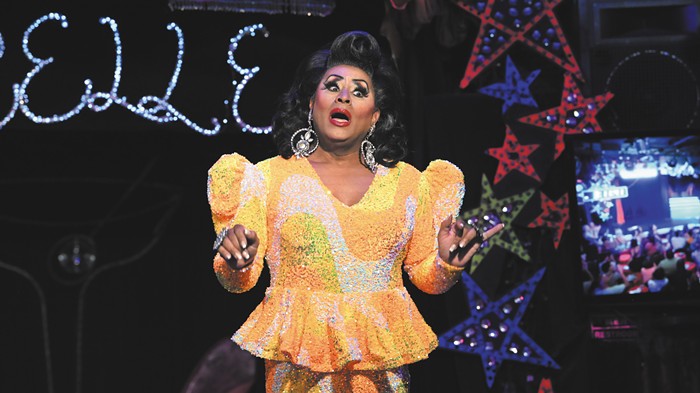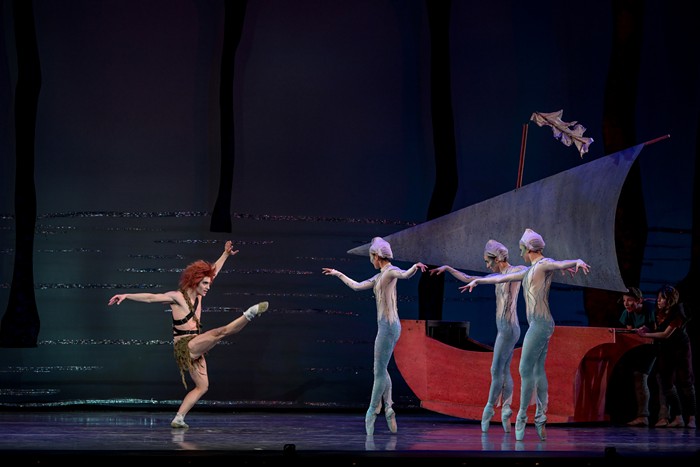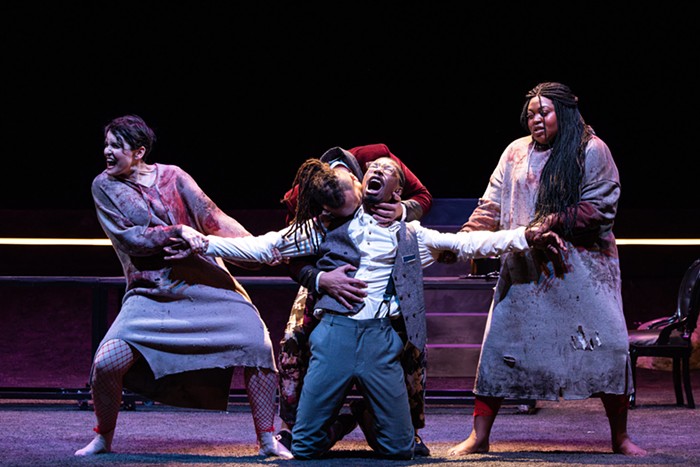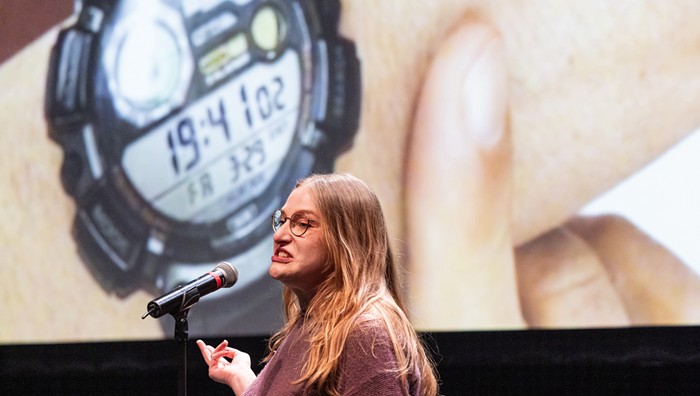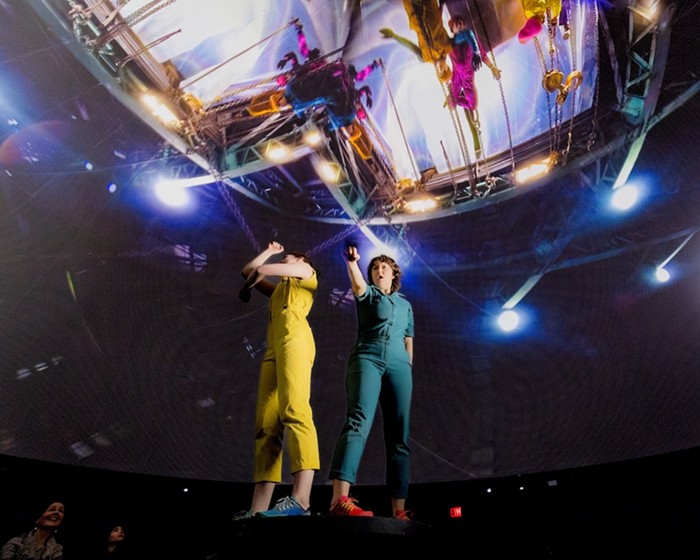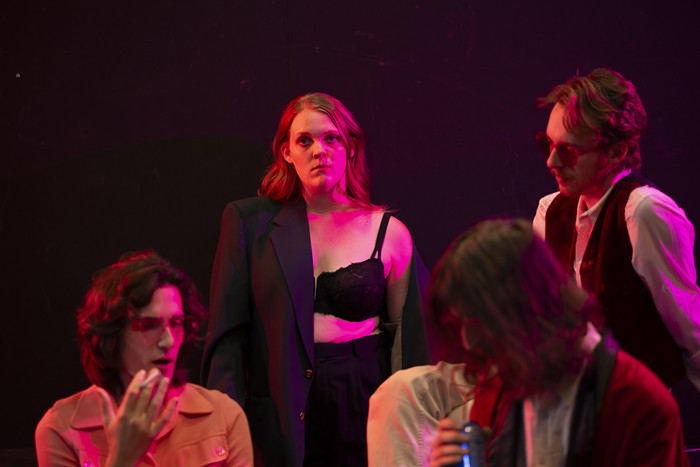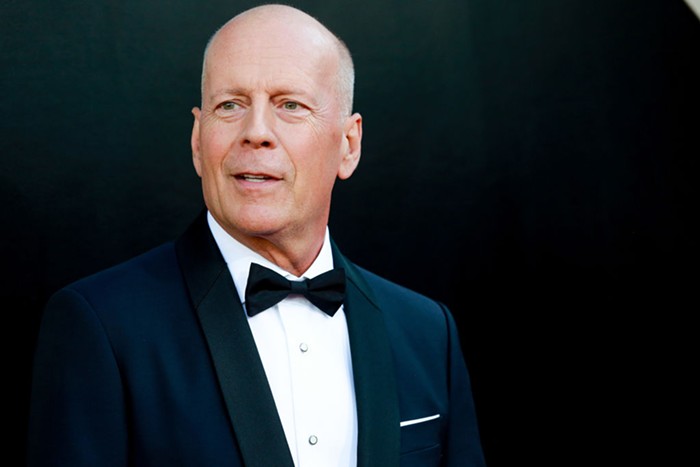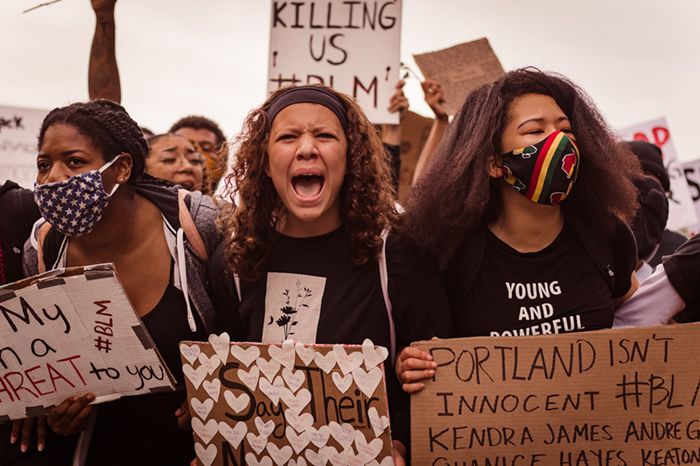IMAGINE AN ARCHIVE of artifacts that explores the most important questions humanity has grappled with. What would be in there? And who would make the journey to see it?
This is the premise and underlying experiment of 11: Dance Co's newest production, Library at the End of the World. The show opens with a polite librarian, who sets up a post-apocalyptic world for the audience to imagine. He says that "the landscape out there is a little harsh" and thanks the audience for having "braved it to see the library." Like any good library, this one is well stocked. With 12 pieces by as many choreographers, the performance creates space for numerous perspectives, a plurality that is echoed in the remarkable diversity of dancers themselves (21 in total), representing a variety of shapes, backgrounds, ethnicities, and experience.
It's a large group for such a small space, and things get intimate. Like the company's debut last year, which presented 11 dance-works about human emotions, the pieces in Library feel fresh, raw, and deeply emotive. The performance begins with the energetic "The Originals," choreographed by Ching Ching Wong of the Northwest Dance Project. Set to the classic wedding recessional by Mendelssohn, a troupe of dancers enter, carrying two other dancers—a bride and groom—who they deposit center stage. The synthesized dance beats of the 1990s bubble-gum hit "Barbie Girl," by Aqua, replace the wedding march, and the choreography that follows seems to imagine these dancers have all the limitations of the plastic bodies of the dolls named in the song—for a fun, often comical effect.
In the following piece (one of my favorites), "They Never Saw It Coming" by Toogie Barcelo, a large ensemble of dancers on all fours, dressed in dinosaur costumes that appear to be hand-stitched from patterned fabrics, fills the stage. They migrate across it with heavy, lizard-like movements, but in their huddling and togetherness and soft fabrics, they seem like warm-blooded creatures. This tension sets up motifs that play out again and again in the works that follow: explorations of society, survival, emotion, alienation, and connection.
Overall, the perspective is decidedly youthful, and the subsequent dances increasingly include the innovative interweaving of classical and street styles the company is known for—an approach they describe as neo-fusion. Theatrical elements bind the work. Sometimes choreography is closely tied to song lyrics, sometimes we see a layering of contrasting elements, (e.g., hip-hop choreography set to Ben Howard, masculine dance motifs executed by men in floral dresses). In each piece, a narrative unfolds. The audience is reminded of its role and agency, encouraged by the librarian to be vocal, and sometimes directly challenged, as in the case of "Women on Parade," a piece that uses improvisation to incite a remarkably unique and genuine experience between audience and dancers.
"I strongly believe we can tell stories through dance that people can feel," Artistic Director BB DeLano said in a recent interview. To this end, the choreography is closely tied to "everyday lives and movement."
So who will venture to see this library? That's a question at the heart of the company's artistic direction. While they aim to put the dancers first, they're also interested in making dance more accessible to the greater public. "Dance can be really scary for people," DeLano said. Her vision is to break down some of the barriers an audience might encounter with this medium. "Does relatability make it not art?" she asks.
Grappling with that question, the 11: Dance Co is an exciting addition to Portland's living library of performing arts.

